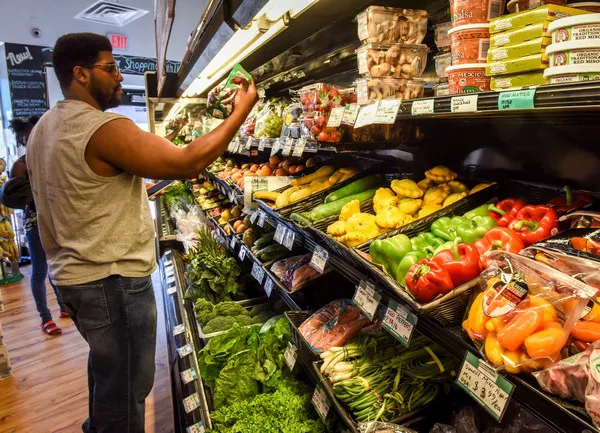Los Angeles, CA – The Los Angeles Regional Food Bank’s recently released 2022 annual report has exposed a concerning reality: one in five people in Los Angeles County grapples with food insecurity. This surge in food insecurity is primarily attributed to the combined effects of soaring inflation and the cessation of pandemic-era support.
In 2022, the food bank distributed 110 million pounds of food, marking a significant decline from the 133 million pounds in 2021 and 174.6 million pounds in 2020. Michael Flood, CEO of the Los Angeles Regional Food Bank, has linked this decrease to the conclusion of the U.S. Department of Agriculture’s Farmers to Families Food Box Program in May 2021.
Flood explained, “Shortly after the pandemic hit and led to the shutdown of hotels, conventions, restaurants, and schools, a surplus of food emerged at the grower-producer level, as their products had no outlets. This surplus, driven by the USDA’s identification of food surpluses and its allocation to food banks, significantly boosted food distribution in 2020.”
Produce constitutes the primary category supplied by the food bank through its network of 600 partner agencies and food bank distributions. Inflation started impacting the food bank in early 2022, particularly affecting the cost and availability of produce.
“We have transitioned our mission from addressing ‘food insecurity’ to ‘nutrition insecurity,'” Flood stated. This shift recognizes that food insecurity extends beyond mere calorie intake and covers the availability of nutrient-rich foods. Inflation has influenced food purchasing behaviors, with individuals opting for more affordable options like pasta and rice over fresh produce.
In October 2022, according to the USDA’s Food Price Outlook report, farm-level fruit prices surged by 11.5%, while farm-level vegetable prices skyrocketed by 22.4%.
Flood commended the USC Dornsife for its work in tracking food insecurity and stated that the institution is developing methods to measure nutrition insecurity, a newer concept.
In September, the USC Institute for Food System Equity published a study revealing a 6% increase in food insecurity, with nearly one million households affected compared to the previous year.
The termination of pandemic benefits from the SNAP CalFresh program in March 2023 further exacerbated food insecurity. This resulted in an immediate 9% surge in people seeking assistance from the food bank.
The food bank has observed a growing number of monthly visitors, with 870,000 individuals served since the start of the year, compared to 800,000 in 2022. Their food supply is a combination of USDA donations and private contributions, with a minor portion purchased directly by the food bank.
One contributing factor to rising food insecurity is the low enrollment in CalFresh, a federal food assistance program. David May, Director of Marketing and Communications at the Los Angeles Regional Food Bank, and his team work to reach out to potentially eligible individuals for CalFresh.
May stated, “Many people in L.A. County qualify for CalFresh, but the number of people accessing the program remains lower. Some individuals who qualify may need assistance in navigating the application process.”
Food insecurity is a significant issue for some USC students, with the high cost of living and tuition contributing to the challenge. To address this, the Trojan Food Pantry, which partners with the St. Francis Center, offers free groceries to students facing food insecurity. Additionally, student volunteers help in managing the pantry.
The Trojan Food Pantry operates on campus, offering support to students impacted by food insecurity. It operates on Tuesdays and Wednesdays from 2 p.m. to 4:30 p.m., serving between 100 and 200 students daily.
Angel Bonilla, a sophomore majoring in business and accounting, volunteers weekly at the Trojan Food Pantry and recognizes the importance of awareness and accessibility to such resources for students. He mentioned the need for more advertising to ensure that students are aware of available support.
The food bank relies heavily on volunteers, with the number of volunteers increasing from 12,000 in 2021 to 16,700 in 2022 due to a growing demand for assistance. Many volunteers, like Mary Connors, are dedicated to making a meaningful impact by ensuring that those in need have access to essential food resources.
Connors emphasized, “Food isn’t a privilege; it’s a necessity that everyone should have access to. Many people struggle to afford it or don’t have access, so it’s vital to support efforts to address food insecurity.”
The Los Angeles Regional Food Bank continues its commitment to addressing food insecurity and working with partner agencies to extend support to those in need.

